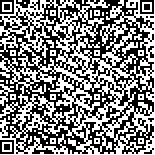| 摘要: |
| [摘要] 目的 比较内镜下鼻胆管引流术(ENBD)与胆管支架置入术(EBS)在肝门部胆管癌患者术前或姑息治疗前的应用疗效。方法 选择2011-05~2019-05在河南科技大学第一附属医院内镜中心接受临时内镜下胆管引流术的肝门部胆管癌患者156例,根据患者治疗方式的不同分为ENBD组(112例)和EBS组(44例)。比较两组治疗前后的肝功能指标水平,以及术后引流管移位、导管堵塞、胆管炎、胆囊炎、肝脓肿、导管诱发的十二指肠溃疡和内镜逆行胰胆管造影术(ERCP)后胰腺炎并发症的发生率。结果 两组术前碱性磷酸酶(ALP)、总胆红素(TB)、谷丙转氨酶(ALT)、γ-谷氨酰转肽酶(GGT)水平比较差异无统计学意义(P>0.05);术后两组ALP、TB、ALT、GGT水平均降低,与同组术前比较差异有统计学意义(P<0.05),但组间比较差异均无统计学意义(P>0.05)。ENBD组患者引流管移位、胆管炎的发生率低于EBS组,差异有统计学意义(P<0.05);但两组导管堵塞、胆囊炎、肝脓肿、导管诱发的十二指肠溃疡、ERCP术后胰腺炎发生率比较差异均无统计学意义(P>0.05)。结论 ENBD和EBS均可显著改善患者肝功能情况,但ENBD的术后并发症发生率更低,可作为肝门部胆管癌患者术前或姑息治疗前首选的临时内镜下胆道引流方法。 |
| 关键词: 肝门部胆管癌 内镜下鼻胆管引流术 内镜下胆管支架置入术 |
| DOI:10.3969/j.issn.1674-3806.2020.09.08 |
| 分类号:R 735.8 |
| 基金项目:河南省医学科技攻关计划项目(编号:2018020906) |
|
| Comparison of the application effects of endoscopic nasobiliary drainage and endoscopic biliary stenting on patients with hilar cholangiocarcinoma before operation or before palliative treatment |
|
JIANG Zhen, ZHANG Ying-jian, LIU Hai-chao
|
|
Department of Gastroenterology, the First Affiliated Hospital of Henan University of Science and Technology, Luoyang 471003, China
|
| Abstract: |
| [Abstract] Objective To compare the application effects of endoscopic nasobiliary drainage(ENBD) and endoscopic biliary stenting(EBS) on patients with hilar cholangiocarcinoma before operation or before palliative treatment. Methods One hundred and fifty-six patients with hilar cholangiocarcinoma who underwent temporary endoscopic biliary drainage at the Endoscopy Center of the First Affiliated Hospital of Henan University of Science and Technology from May 2011 to May 2019 were selected, and they were divided into ENBD group(112 cases) and EBS group(44 cases) according to different treatment methods. The levels of liver function indexes were compared between the two groups before and after treatment, as well as the incidence rates of postoperative drainage tube displacement, catheter blockage, cholangitis, cholecystitis, liver abscess, catheter-induced duodenal ulcer and complications of pancreatitis after endoscopic retrograde cholangiopancreatography(ERCP). Results There were no statistically significant differences in the levels of alkaline phosphatase(ALP), total bilirubin(TB), alanine aminotransferase(ALT) and gamma glutamyl transferase(GGT) between the two groups before operation(P>0. 05). The levels of ALP, TB, ALT and GGT in the two groups were all decreased after operation, and the differences were statistically significant compared with those in the same group before operation(P<0.05), but the differences between the two groups were not statistically significant(P>0.05). The incidence rates of drainage tube displacement and cholecystitis in the ENBD group were lower than those in the EBS group, and the differences were statistically significant(P<0.05). However, there were no statistically significant differences in the incidence rates of drainage tube obstruction, cholangitis, liver abscess, catheter-induced duodenal ulcer and post-ERCP pancreatitis between the two groups(P>0.05). Conclusion Both ENBD and EBS can significantly improve the patients′ liver function, but the incidence of postoperative complications of ENBD is lower. ENBD can be used as the first choice of temporary endoscopic biliary drainage for patients with hilar cholangiocarcinoma before operation or before palliative treatment. |
| Key words: Hilar cholangiocarcinoma Endoscopic nasobiliary drainage(ENBD) Endoscopic biliary stenting(EBS) |

